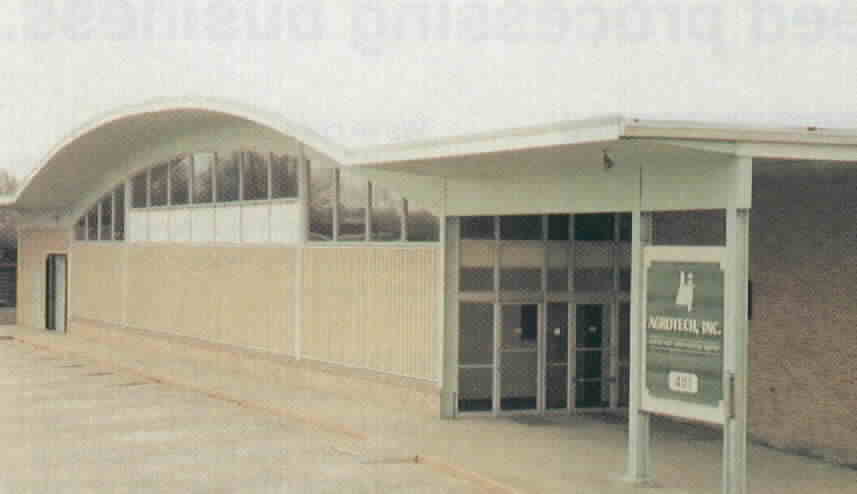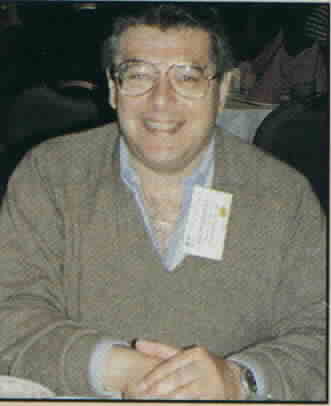
INFORM, Volume 6, No. 4 (April 1995): 421-423

Agrotech to convert soapstock into fertilizer
Agrotech began with an idea on how to solve a problem.
The problem was an environmental one—the treatment and disposition of soapstock, a by-product of alkali refining of vegetable, marine and animal fats and oils. Physical refining will reduce the amount of waste by-products, but it is less efficient than caustic refining.
Soapstock traditionally has been processed by acidulation to recover residual fat and oil that usually was sold to feed manufacturers. However, acidulation produces a large volume of aqueous material, known as acid water, that is very high in biological oxygen demand (BOD), phosphorus and other matter. Disposal of acid water increasingly is becoming subject to more restrictive environmental regulations.
The challenge was to create a useful product from the acid water. I thought there was a way to produce a multinutrient liquid fertilizer with beneficial, soluble organic matter.
But to create a fertilizer by-product rather than traditional acid water, it would be necessary to refine the crude oil with potassium hydroxide (KOH), instead of sodium hydroxide (NaOH), thus replacing the sodium, which has no nutritive value for—or can be harmful to—plants, with potassium. Potassium is one of the three primary plant nutrients; the other two are nitrogen and phosphorus.
Phosphorus, which is naturally present in soapstock at levels high enough to be commercially useful as a fertilizer, is, however, considered a "nightmare" problem in effluent. Phosphorus in waste effluent has been linked to eutrophication in aquatic ecosystems, leading to an overgrowth of plants and reduced biodiversity. Phosphorus in soapstock comes from two sources—the natural phosphatides ("lecithin") present in oilseeds and from the addition of phosphoric acid to crude oil prior to refining to help remove nonhydratable phosphatides. Those phosphatides often are complexed with calcium and magnesium ions (Ca and Mg also are valuable plant nutrients).
Acidulation of "potassium soapstock," the by-product produced when refining is done with KOH, would put all the potassium ions in the liquid product. Using sulfuric acid for acidulation would introduce sulfate ions into the liquid as well. Sulfate is the preferred form of sulfur in fertilizers and often is referred to as the fourth primary nutrient. The phosphorus in the soapstock as phosphate or in organically bound forms also ends up in the aqueous phase.
At this point, the aqueous phase of the soapstock acidulation is known as acid water (the pH is about 1). This acid water contains a mostly soluble mixture of phosphorus, potassium and sulfur—three of the four primary plant nutrients listed above. If this solution were neutralized with a nitrogen-containing base (ammonia is the base of choice), nitrogen would be introduced into the liquid. This would complete the process and yield a multinutrient plant food containing the three primary plant nutrients (nitrogen, phosphorus and potassium), the three secondary plant nutrients (sulfur, calcium and magnesium), as well as most, if not all, of the trace element micronutrients required by plants (iron, zinc, manganese, copper, etc.)—all derived from natural sources.
That was the theory behind our process. In order to test it, we had to collaborate with a vegetable oil refiner. Central Soya Co. Inc. was the first firm that agreed to work with Daniels Fertilizer Co. to produce fertilizer for testing. Over time, several other firms, including Riceland Foods, Liberty Vegetable Oil, Bunge Foods and others, tried KOH refining.
When the tests were completed and analyses done, two results became clear: first, KOH-refined oils showed improved quality/cost characteristics over NaOH-refined oils and, second, the fertilizer demonstrated improved performance when compared to other commercially available products.
Agrotech then was formed to acquire soapstocks from refiners (who would thus be relieved of any disposal responsibilities) and to convert those soapstocks into fatty acids for feed markets and fertilizers for diverse markets.
A proposal was made to Bunge Foods: if Bunge would use KOH instead of NaOH for caustic refining, Agrotech would agree contractually to process all the resultant potassium soapstock. Bunge, after performing trials to satisfy its cost and quality concerns, agreed. Agrotech decided to build its first processing plant in Sherman, Texas, 90 miles from Bunge’s Fort Worth, Texas, refinery. Sherman, which has been the home of a Mrs. Tucker’s facility, Anderson Clayton, Kraft and, now, an Ag Processing refinery, has been known for years for its wastewater disposal problems. That was one reason Agrotech chose Sherman—if the firm’s "zero discharge" technology is successful in Sherman, the industry will notice and appreciate that the technology can work anywhere. As of early 1995, production was scheduled to begin in April or May of 1995.
Basically, for every three tons of potassium soapstock processed, the new facility’s acidulation process will produce two tons of liquid fertilizer and one ton of fatty acids. The fatty acids will be marketed to the feed industry.
The fertilizer initially will be marketed in five-gallon containers for agricultural and professional horticultural use. Home gardeners will be able to buy 12-ounce containers, when packaging for that market begins.
Tests with the fertilizer have been positive. For agricultural markets, the liquid fertilizer’s multinutrient content would be beneficial in specialty crop foliar feeds. Organic farmers will appreciate the natural aspects of the fertilizer. In the horticultural industry, one commercial greenhouse in Texas reported that trials with the new fertilizer showed that its rose plants grew taller and produced 15% more blooms. Longer stems on red roses can mean an increase in revenue because long-stem roses sell for more than those with short stems. The greenhouse says it plans to use Agrotech fertilizers exclusively when the product becomes available. Another rose grower reported his crop yield increased by 10—15% (blooms produced) with the new feed. Tomato plants appear to produce more fruit for a longer period.
Patents on the process have been secured in North America, Europe, Asia, Australia and Israel for what is, in essence, a system to extract natural plant nutrients from oilseeds, which basically have been concentrating those nutrients into its seeds during the growing cycle, and to put those nutrients to work growing a new crop.
| Ralph Daniels is the president of Daniels Agrotech Inc., a relatively new firm that later this year will begin marketing fertilizer derived from vegetable oil soapstocks generated through a caustic refining process using potassium hydroxide (KOH) rather than sodium hydroxide (NaOH) (see related article on page 425 explaining the process). Daniels formed Daniels Fertilizer in 1984 (after more than a decade with IBM and operating his own consulting business) to try to commercialize his idea. Daniels Fertilizer eventually evolved into Agrotech. In this article, Daniels explains how the concept was developed and discusses some potential markets. Daniels told one newspaper reporter that he knew his idea was viable when his next-door neighbor, a gardening specialist, kept looking over the fence and shaking his head when Daniels' late-planted scrawny tomato plants began growing larger and producing more tomatoes than the neighbor's carefully selected and meticulously tended tomato plants. |  |